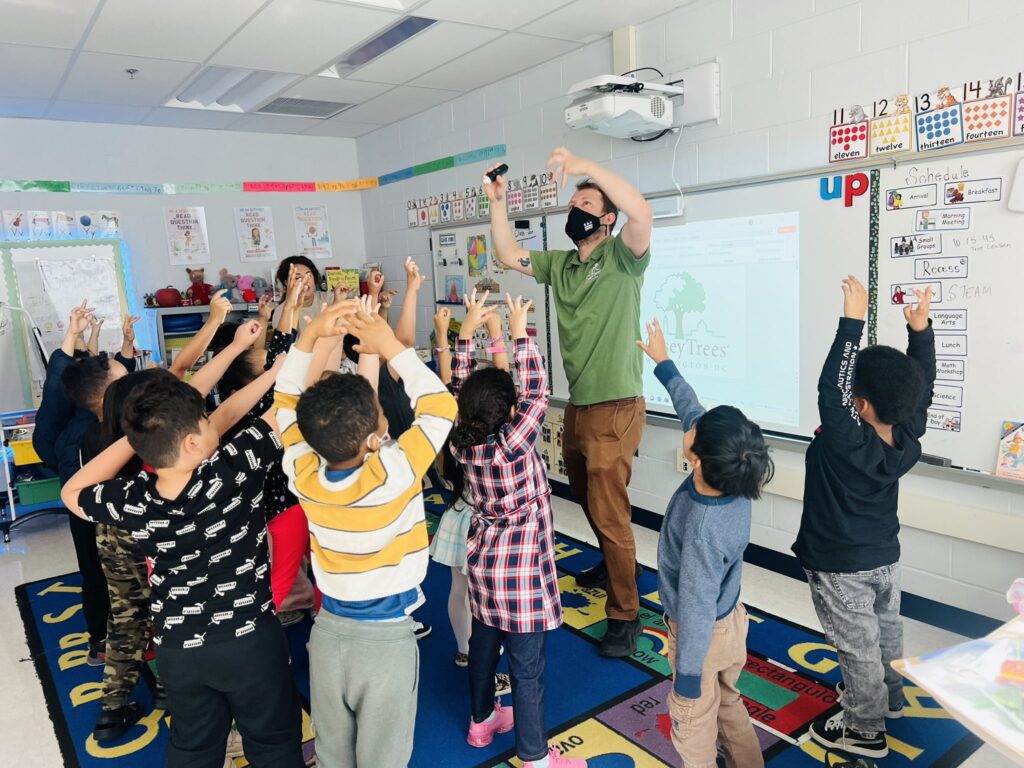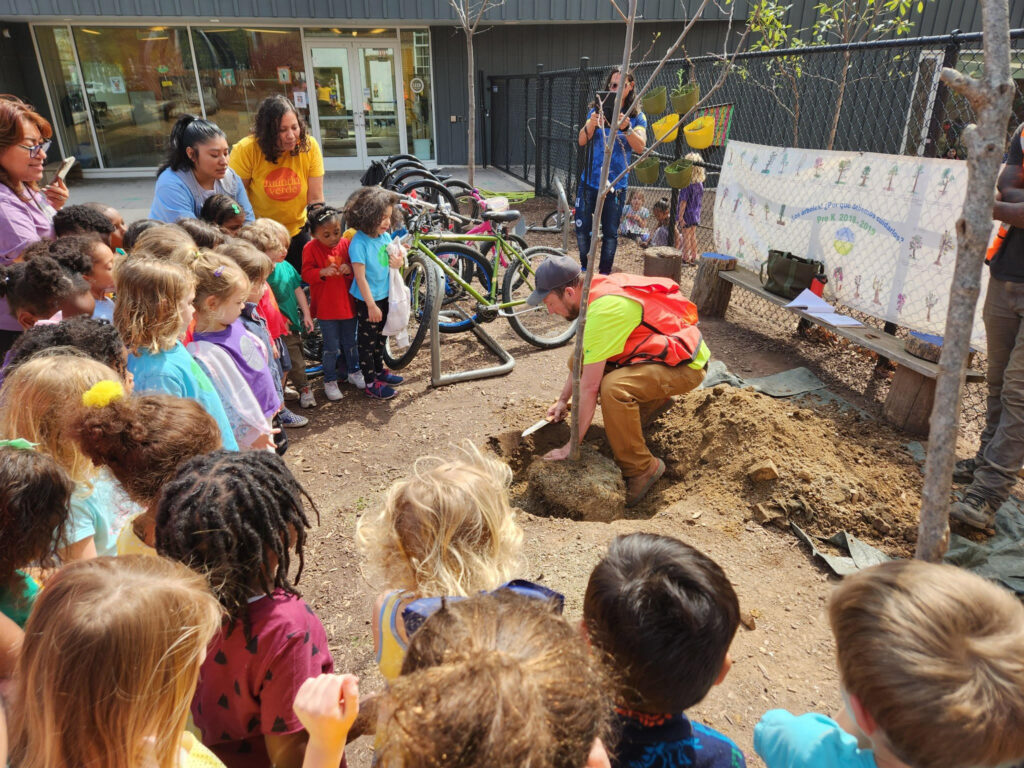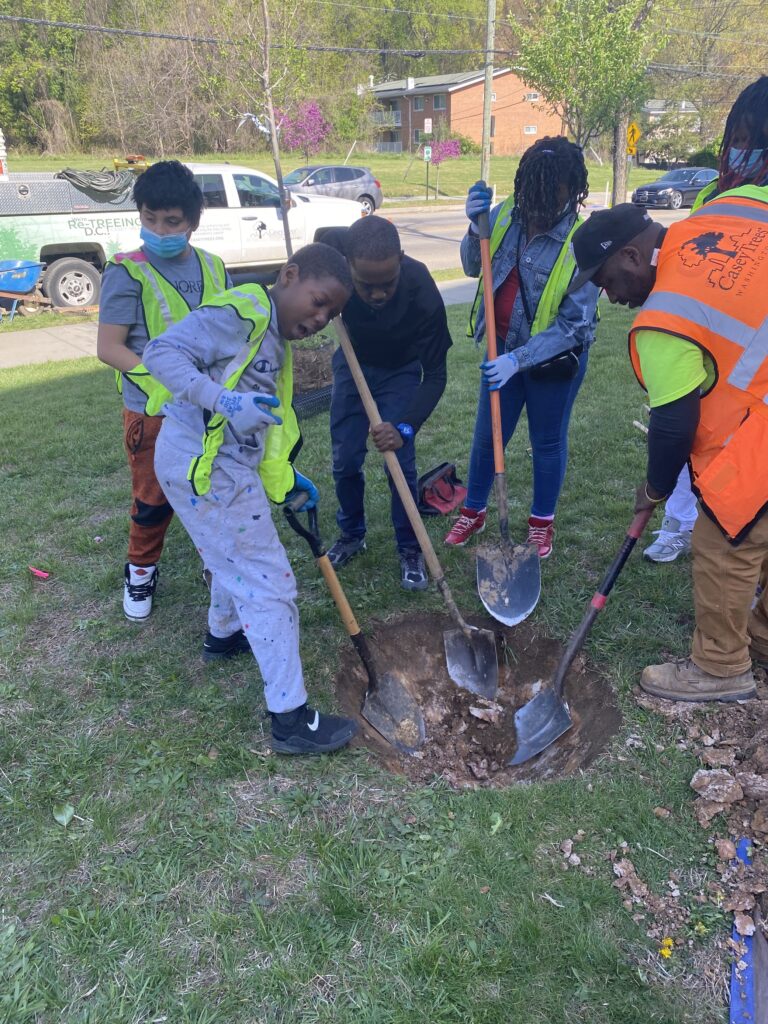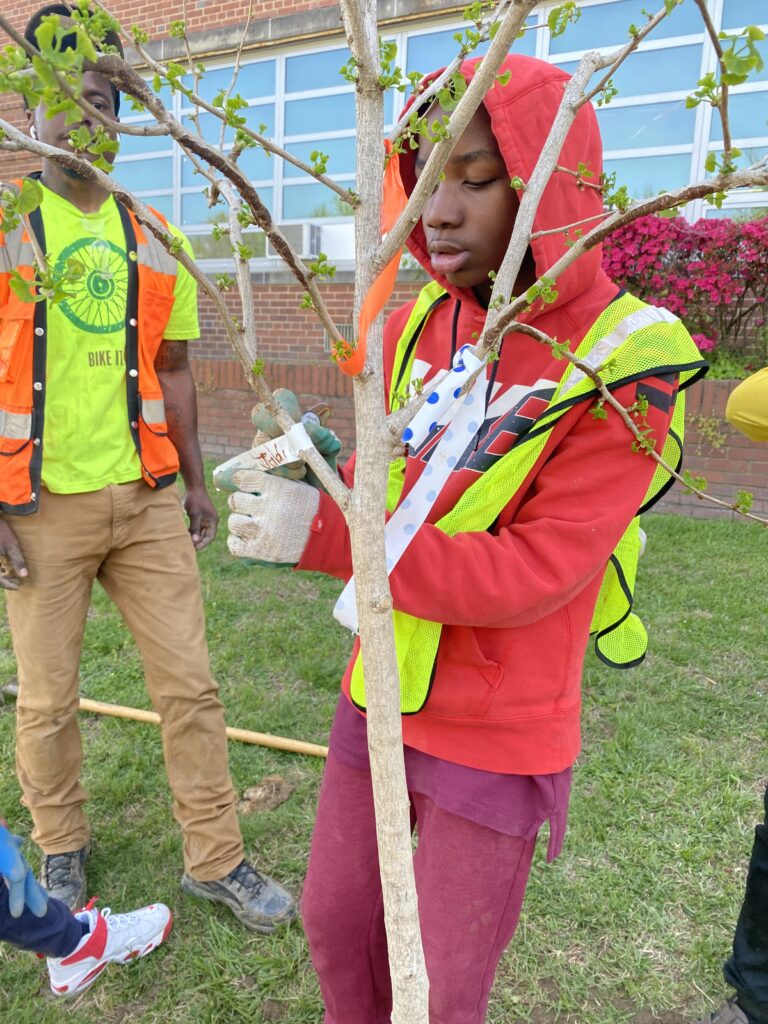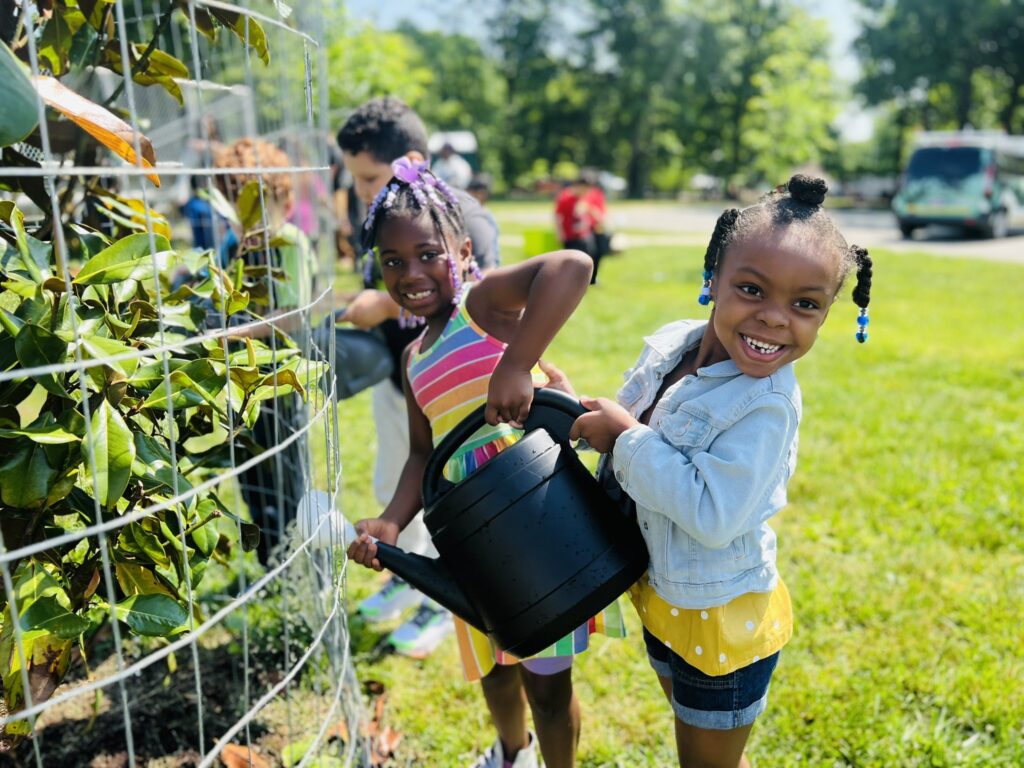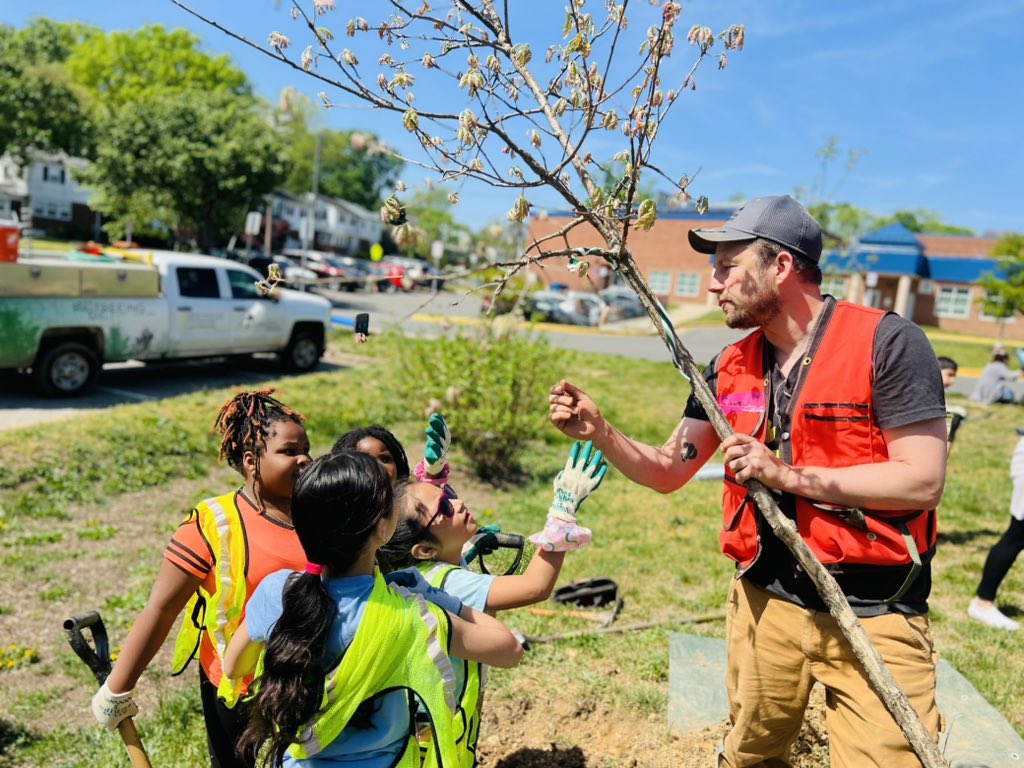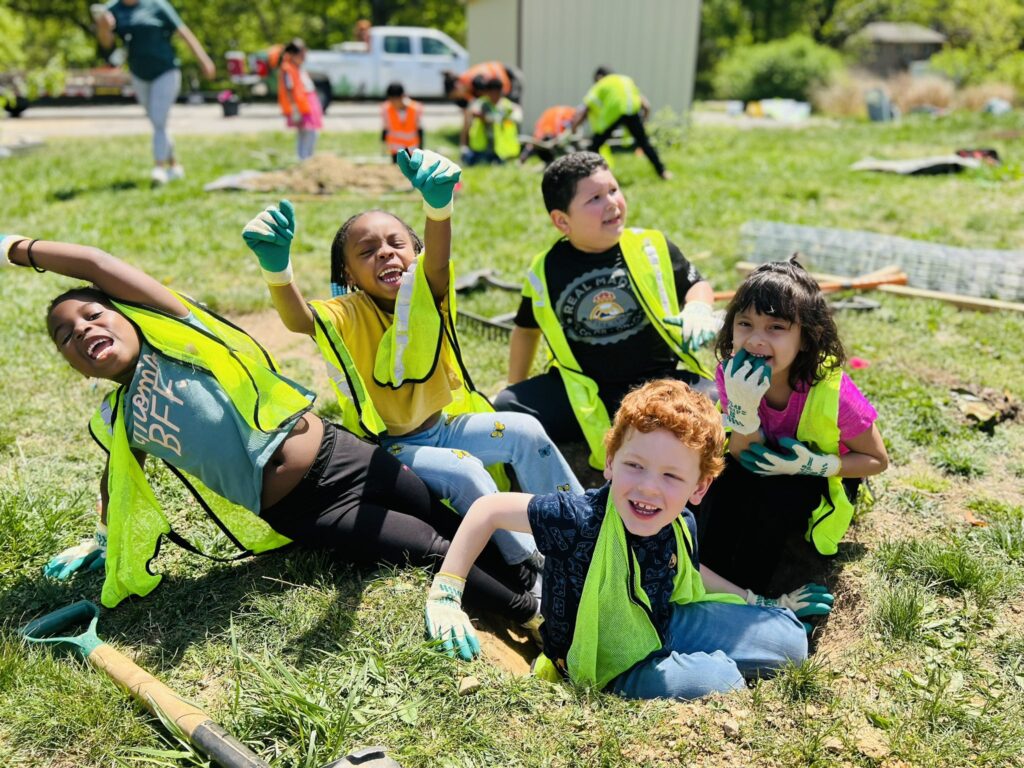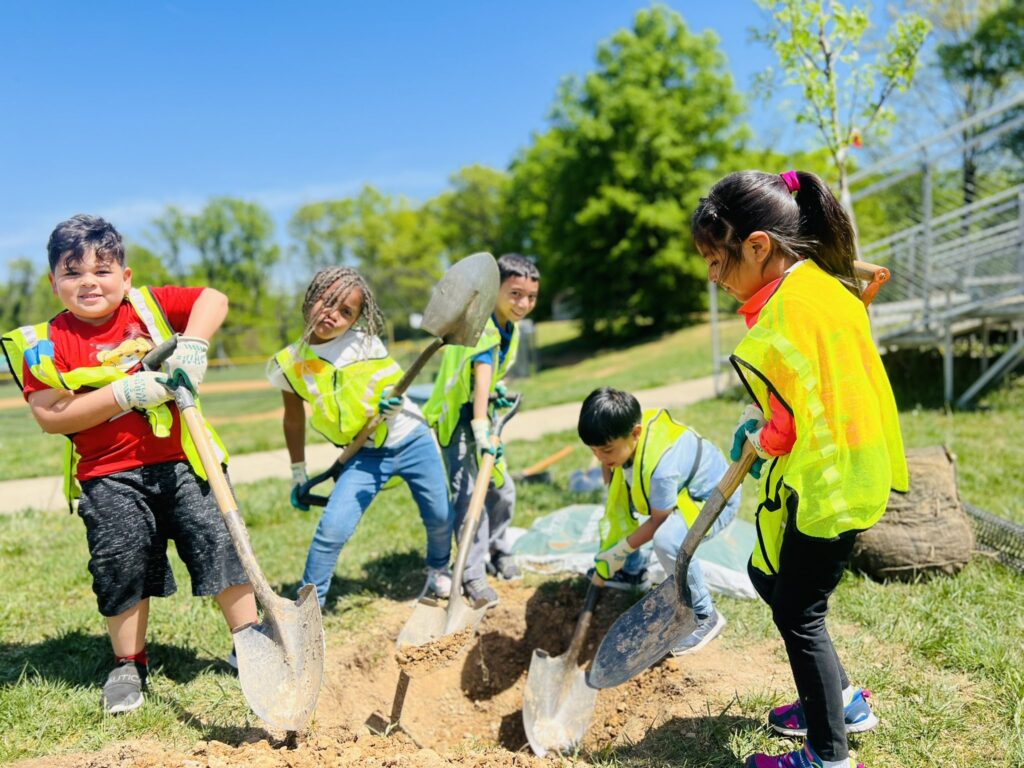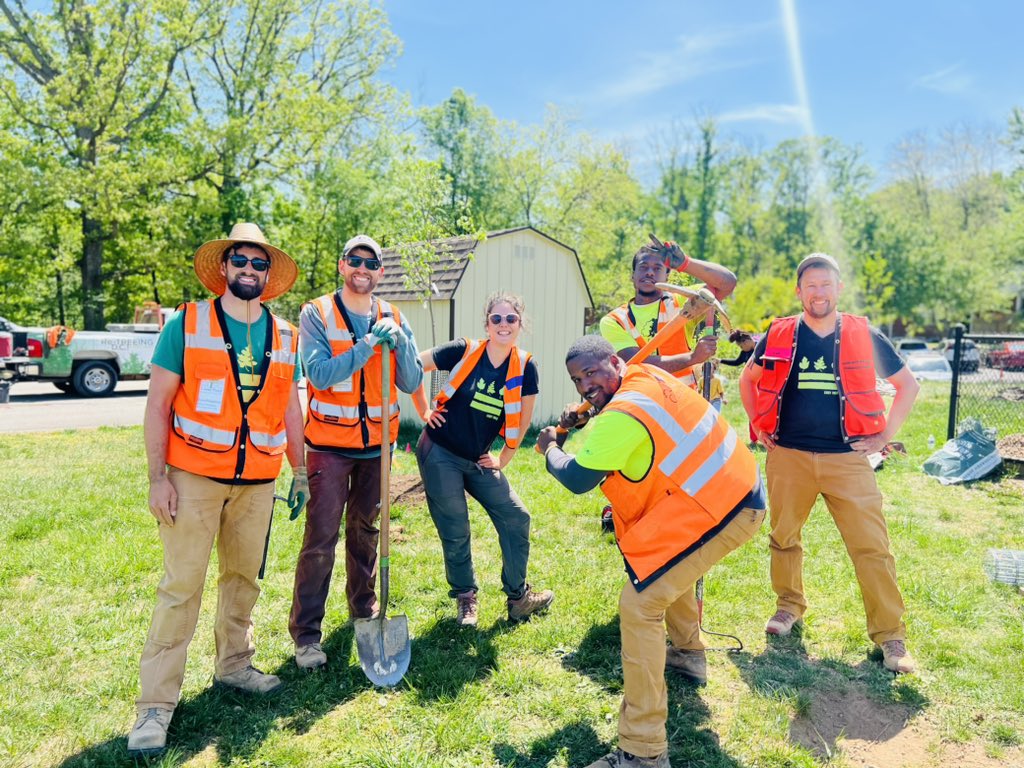THE LEAFLET
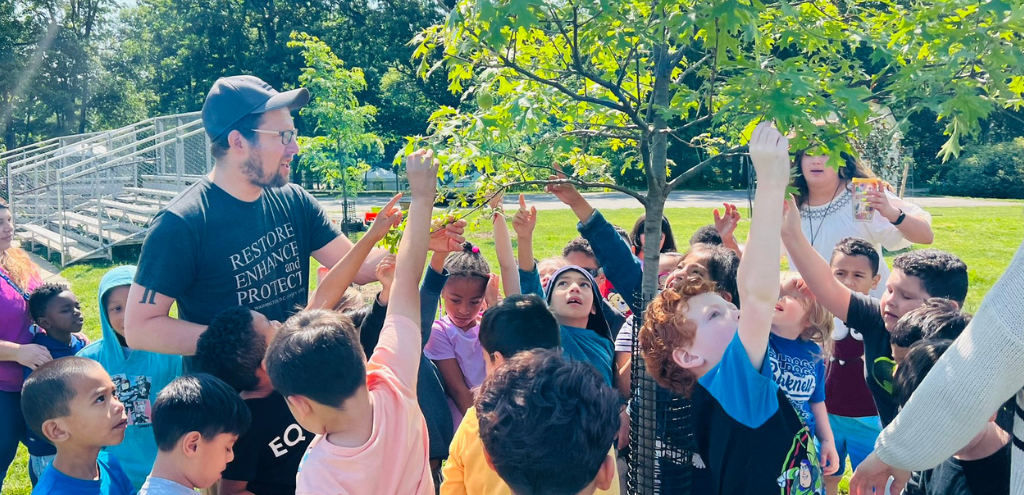
Teaching Students the Power of Trees
Restoring and protecting our city’s tree canopy means planting a lot of trees. But enhancing the tree canopy also means enhancing our relationships to trees and urban ecology. Planting a tree is a lot like developing a friendship. The tree requires care, water, attention, and in return it offers shade, beauty, even companionship. This past school year, students in schools across greater DC enhanced their relationships with their urban forest by planting and befriending trees on their campuses.
Between November and April, Casey Trees worked with over 1,000 students across 16 schools in D.C as well as Fairfax and Prince George counties. Together, we planted 233 trees at schools! Sam Nelson, Youth Programs Forester, first taught students about the magic of leaves, photosynthesis, and what it all means for our shared ecosystems and systems.
Students helped plant trees in areas of critical need of shade, especially near playgrounds and perimeters of fields. But trees provide more than shade. Often, trees are teachers themselves, and with the right skills, students can learn directly from a plant in different seasons. This is why we planted diverse mixes of native large canopy trees like oaks, lindens, and elms alongside paw paws, flowering cherries, magnolias, and ‘purple robe’ black locusts. Together these trees will provide phenological lessons about bark, pollinators, leaves, seed structures, and interdependent urban ecosystems for decades to come.
Digging a hole can be hard work but many students embraced the challenge! A middle-school student at historic Sousa Middle School told Crew Chief, Drew Roberts, that he wanted to plant trees for the rest of his life after he finished school. A fifth grader at Plummer Elementary, after planting a ginkgo in the school’s front yard along Texas Ave SE, said it was “the best day of my life”. Students often named their trees: Lil’ Jeff, Oakie, Reuben, Honeybear the honey locust, and Jamal the serviceberry (named after a crew member).
But planting a tree doesn’t end with a cute name and the spreading of mulch. In the book Braiding Sweetgrass, Potawatomi citizen and scientist Robin Wall Kimmerer suggests we all engage in relationships of sustained mutual reciprocity. That’s why students return to the trees to help water and check on their health during the school year. Many students are only a couple years older than the trees we plant from our farm. In a sense, they get to grow alongside the very trees they helped plant. Together, they flourish.
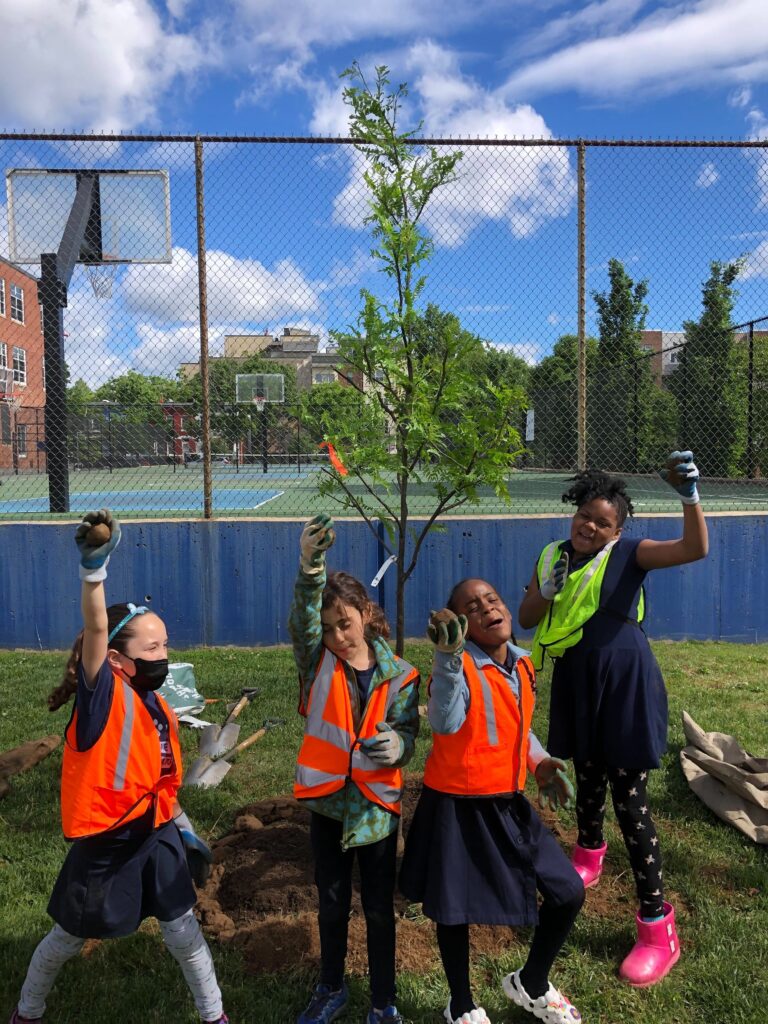
Planting a tree is a profound act of imagination and hope. It is the act of looking at a space, imagining future growth that will benefit many, and then making it happen. In planting trees with students, we hope these experiences help establish a growing foundation for environmental connectivity. We hope to enhance the urban canopy with youth but also to allow it to enhance us, too, through our sustained relationships together.
If you work or know someone who works at a school that has space for 10+ trees and students who would love to plant, please fill out this tree planting application! We would love to grow the forest together alongside the region’s brightening youth.
